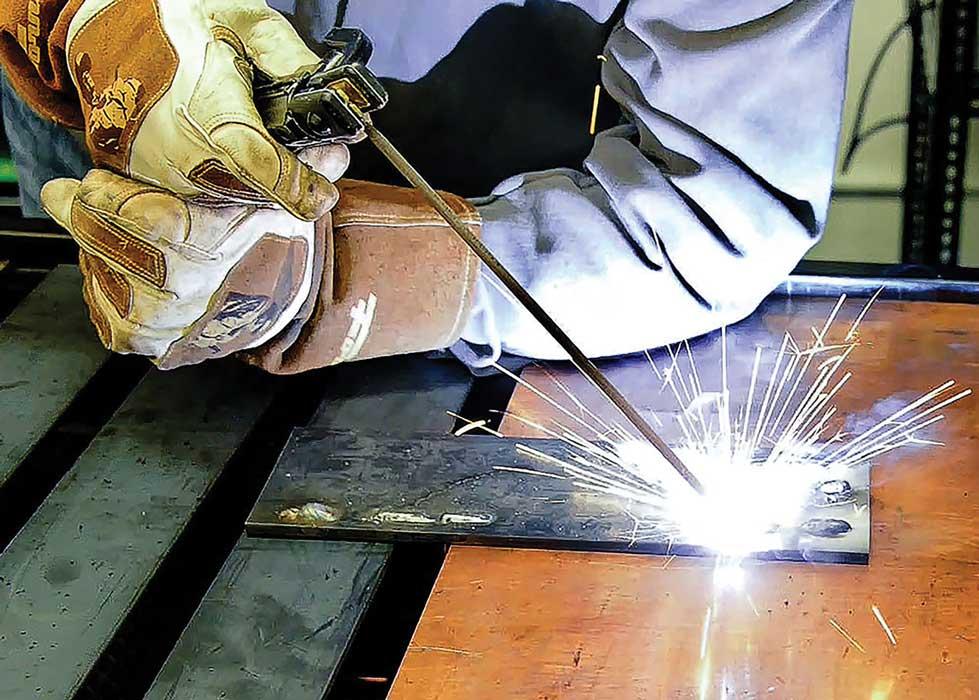Enhancing Your Welding WPS: Techniques for Improved Efficiency and Efficiency
Enhancing Your Welding WPS: Techniques for Improved Efficiency and Efficiency
Blog Article
Grasping Welding WPS Criteria: Ideal Practices and Techniques for Top Quality Welds
In the realm of welding, mastering Welding Treatment Spec (WPS) standards is a critical part that directly affects the high quality and integrity of welds. Complying with these requirements ensures consistency and reliability in welding results. Nevertheless, attaining excellence in welds surpasses just comprehending the standards; it entails executing ideal methods and techniques that raise the craft to a degree of precision and skill that distinguishes the standard from the extraordinary. As we navigate through the complexities of welding WPS criteria, discovering key insights and techniques for accomplishing top-tier welds will certainly be extremely important for welders seeking to master their craft and create welds that stand the test of time.
Comprehending Welding WPS Specifications

Assessors rely on WPS documents to verify that welding procedures are being followed appropriately and that the resulting welds are of high quality. Designers use WPS requirements to make welding procedures that make certain the resilience and integrity of welded structures.


Important Tools for Top Quality Welds
Grasping welding WPS requirements is necessary for welders to efficiently use the essential tools needed for producing quality welds. One of one of the most essential tools for high quality welds is a welding equipment. The kind of welding maker needed depends on the welding procedure being used, such as MIG, TIG, or stick welding. Welding safety helmets are also essential to shield the welder's eyes and face from stimulates, warmth, and UV radiation. Additionally, welding handwear covers made from long lasting and heat-resistant products secure the hands from injuries and burns. Clamps and magnets help hold the workpieces together safely during the welding procedure, making sure accurate and specific welds. Wire brushes and damaging hammers are vital for cleaning the weld joint before and after welding to eliminate any kind of contaminations that could affect the top quality of the weld. Last but not least, a gauging tape and angle grinder are beneficial devices for guaranteeing proper alignment and preparing the workpieces for welding.
Trick Techniques for Welding Success
To achieve welding success, one must grasp the essential techniques crucial for creating high-quality welds. One important strategy is keeping the appropriate arc size. Maintaining the electrode at the optimal distance from the workpiece is crucial for producing solid, consistent welds. Additionally, managing the traveling rate is paramount. Moving as well promptly can result in insufficient penetration, while relocating also gradually can lead to excessive warm input and possible issues. Correct manipulation of the electrode angle is one more crucial strategy. The angle at which the electrode is held can influence the grain form and infiltration of the weld. Furthermore, making sure constant weapon angle and instructions of traveling is crucial for harmony in the weld grain. Last but not least, maintaining a secure welding and a steady hand placement throughout the process is essential to accomplishing accuracy and uniformity in the welds. By mastering these key techniques, welders can elevate the quality of their work and get more achieve welding success.
Ensuring Conformity With WPS Standards

In addition, keeping thorough documents of welding specifications, equipment calibration, and evaluation results is vital for demonstrating compliance with WPS criteria. By faithfully sticking to WPS standards, welders can make certain that their job satisfies the required high quality levels and adds to the general success of the welding project.
Troubleshooting Common Welding Issues
When faced with usual welding problems, identifying the source is crucial for reliable troubleshooting. One common problem is the visibility of porosity in welds, commonly triggered by impurities such as oil, wetness, or rust. To resolve this, guaranteeing appropriate cleansing of the base metal prior to welding and using the proper protecting gas can significantly minimize porosity. Another problem frequently come across is lack of combination, where the weld fails to appropriately bond with the base product. This can come from poor warm input or inappropriate welding technique. Readjusting criteria such as voltage, cable feed rate, or travel rate can help improve fusion. In addition, distortion, breaking, and spatter prevail welding obstacles that can be minimized through proper joint preparation, consistent warm control, and selecting the ideal welding consumables. By thoroughly recognizing these common welding problems and their source, welders can efficiently repair problems and attain high-grade welds.
Final Thought
In verdict, understanding welding WPS news criteria calls for a thorough understanding of the standards, making use of essential devices, and implementing key strategies for effective welds. Making certain conformity with WPS criteria is vital for generating high quality welds and preventing typical welding issues. By following ideal techniques and strategies, welders can accomplish constant and trustworthy results in their welding projects.
In the world of welding, understanding Welding Procedure Specification (WPS) standards is an essential part that directly influences the top quality and stability of welds.When delving right into the world of welding practices, an important facet to comprehend is the value and complexities of Welding Procedure Spec (WPS) criteria. WPS standards provide a comprehensive guideline for welding procedures, making sure consistency, top quality, other and safety and security in the welding process. The type of welding maker required depends on the welding process being utilized, such as MIG, TIG, or stick welding.Achieving welding success via the mastery of key methods demands a detailed understanding and adherence to Welding Procedure Spec (WPS) criteria.
Report this page